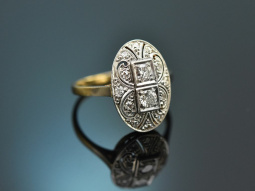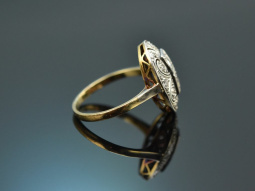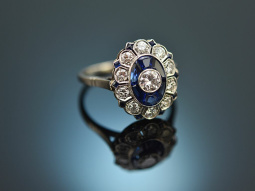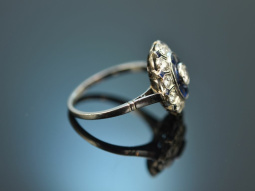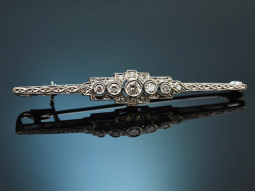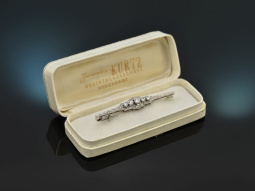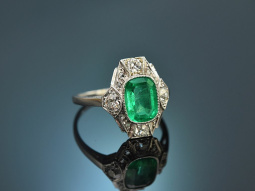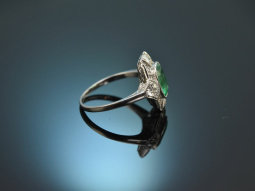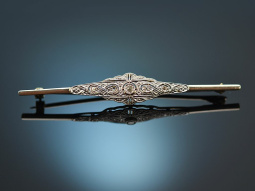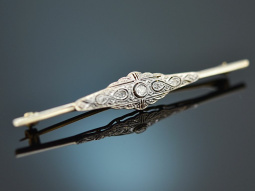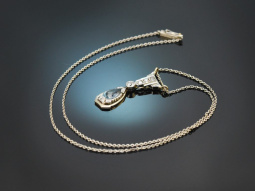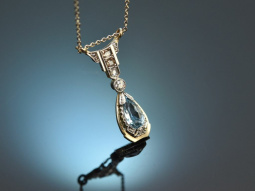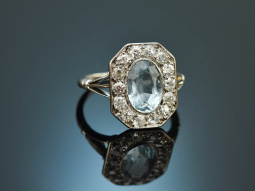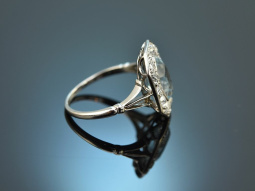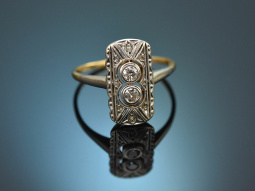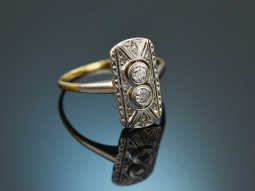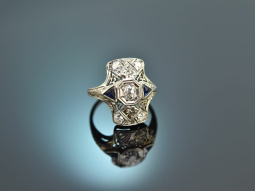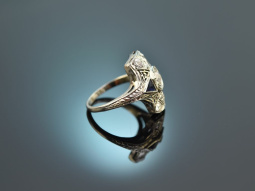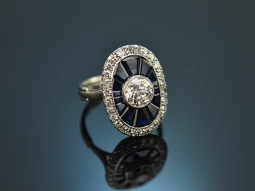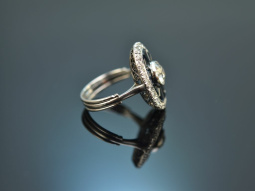Art Déco
(1920s and 1930s)
Art Déco jewellery is still unmistakable today, as it is characterised by maximum opulence and elegance. Embedded in the era of classical modernism with its avant-garde, abstract design language, glamorous jewellery designs were created based on a geometric design language and a preference for strong contrasts. White precious metals with richly sparkling diamonds are accentuated by deep black onyx or intensely coloured coral, sapphire and emerald. Find out more »
What does Art Déco mean?
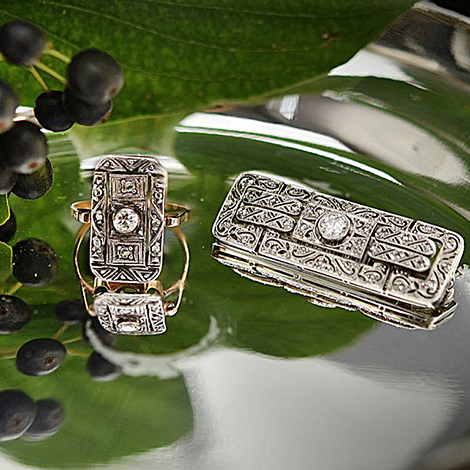
The term Art Déco is derived from the French term arts décoratifs (decorative arts) and was coined retrospectively by the Paris World Exhibition „Exposition internationale des Arts Décoratifs et Industriels modernes“ in 1925. The formal language of that era was reflected in many areas such as fine art, fashion, jewellery, architecture and industrial design.
Influences on Art Déco
At the time of Art Déco, the horrors of the First World War had been overcome and a new zest for life was emerging. Enjoyment, exuberance and new technical possibilities now took centre stage.
Global trade also led to influences from different cultures reaching Europe. Sources of inspiration for the jewellery pieces of the Art Déco therefore also lay in the countries of distant lands such as Egypt, India or Asia.
Machinisation and mechanisation as well as the avant-garde design language of the Bauhaus contributed to the characteristic aesthetics of Art Déco, as did the trends of classical modernism (Constructivism, Cubism and Futurism).
Art Deco jewellery: characteristics and special features

The formal language of Art Déco was dominated by geometric elements, intense contrasts and a frequently tectonic composition. High-quality jewellery dominated the range, but costume jewellery with a high-quality finish also became popular. It was unthinkable that the modern woman - sometimes ‘Garçonne’, sometimes ‘Femme fatale’ - could be seen without jewellery. Typical were above all long necklaces and sautoirs, often made of pearls, but also eye-catching earrings, which corresponded particularly well with the fashionable short haircuts. Brooches were not only found on lapels, but also on gloves and hats as well as headdresses.
White metals such as platinum and later white gold dominated the designs of the Art Déco. It was not until the 1930s that warm colours were used again and red and yellow gold were once more en vogue.
Halsbandaffaire: Your expert for antique jewellery
Our jewellery is, of course, comprised of authentic historical and unique pieces.
Are you looking for Art Déco jewellery? Then browse through our categories and see for yourself our range of long pearl necklaces, earrings, bracelets and rings, including cocktail or engagement rings.
For the jewellery-loving gentleman, we offer high-quality cufflinks, for example made of mother-of-pearl, onyx and platinum, as well as classic pins and signet rings.
Also discover our wide range of vintage jewellery pieces and modern jewellery.
